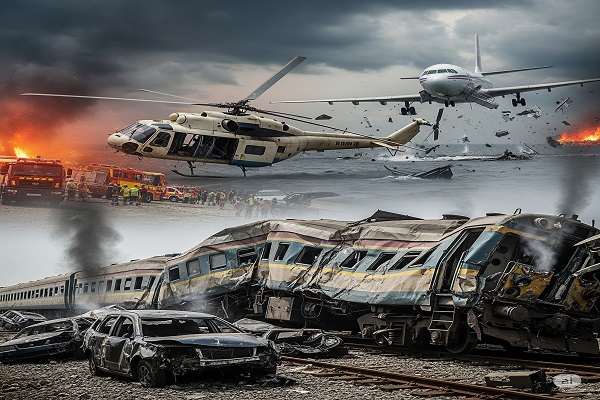On Wednesday, August 6, 2025, Ghanaians woke up at sunrise expecting a normal, bustling day, unaware that by sunset, they would be plunged into a national sorrow courtesy of the never-ending crashes, with the red, gold and green national flag ordered to limit its flapping and shed tears to signal all was not well.
Makola was buzzing, a cocktail of smells filled the air, and market women displayed their products.
Nima and Nkrumah Circle were filled with a cacophony of vendors shouting their wares, music blaring from stalls and bars, and the constant sound of vehicle horns and pedestrian traffic marked the dense Accra Metropolis.
Elsewhere, the government was rolling out its promise of a responsible, sustainable community mining programme in Obuasi, Ghana’s gold hub, to tackle the devastating illegal mining (galamsey) menace that has turned some towns into a land flowing with ‘milk’—not the promised land with honey, but poisons capable of decimating flora and fauna.
By midday, a dark cloud cast its shadow when the Ghana Armed Forces (GAF) announced that its helicopter, carrying five government officials and three crew en route to the event from Accra, the capital, had gone off radar.
A few hours later, it emerged that all occupants had burned beyond recognition after the aircraft plunged into a forest and burst into flames.
The news spread like wildfire, and within hours it had reached international wires, drawing tributes from multiple presidents and international organisations in commiseration with a grieving nation.
This is not the first time the nation has been brought to its knees in wailing and tears. In Ghana, one road crash could record up to 71 fatalities, a figure that approximately matches road fatalities for an entire year in other countries.
These figures are not mere statistics but represent breadwinners, active age groups, energetic human resources and productive brains whose lives end abruptly.
This report meticulously examines some of the deadliest crashes to have rocked the nation, drawing on extensive research on the subject and solutions.
Aviation Tragedies
- 2025 Harbin Z-9 Helicopter Crash (8 fatalities):
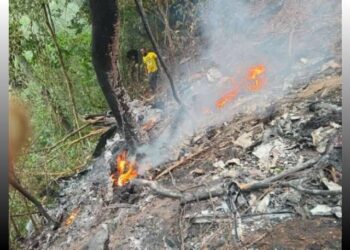
On August 6, 2025, a Ghana Air Force Harbin Z-9 helicopter carrying eight people to an event to tackle illegal mining crashed into a forested mountainside in the Ashanti Region of Ghana, killing all eight people on board.
The helicopter’s wreckage was later found, with all victims burned beyond recognition in a post-crash fire. The impact left the bodies charred and dismembered, requiring forensic DNA in South Africa to identify the remains.

Among the perished souls were Ghana’s Defence Minister, Dr. Edward Omane Boamah, and Environment Minister, Dr. Ibrahim Murtala Muhammed.
The others were the acting Deputy National Security Coordinator, Muniru Mohammed Limuna; Vice Chairman of the governing National Democratic Congress (NDC), Samuel Sarpong; former NDC parliamentary candidate for Obuasi East, Samuel Aboagye; Squadron Leader Peter Bafemi Anala; Flying Officer Twum Ampadu; and Sergeant Ernest Addo Mensah.
President John Mahama had originally been scheduled to attend the event, but delegated the ministers to represent him due to a concurrent occasion.
The cause of the disaster has yet to be determined as authorities investigate the crash.
- 2014 Oil Rig Helicopter Crash (4 fatalities)
A helicopter contracted by the Russian oil company Lukoil, carrying eight people, crashed into the sea about 20 nautical miles off the coast of Takoradi, killing four of them.
The people on board included Ghanaians, Britons, Nigerians, and French.
Four members of the crew were rescued by the Ghana Navy with support from oil companies operating in Ghana.
The passengers were being transported to the Reon Jack, a new oil rig contracted by Lukoil that had arrived in the country to commence appraisal and development of oil discoveries made in 2011.
- 2012 Allied Cargo Plane Crash (12 fatalities)
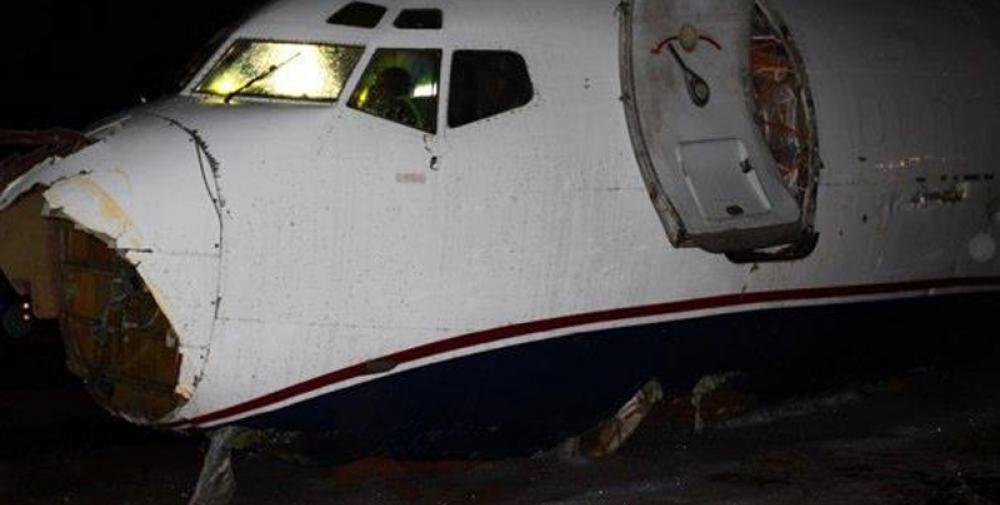
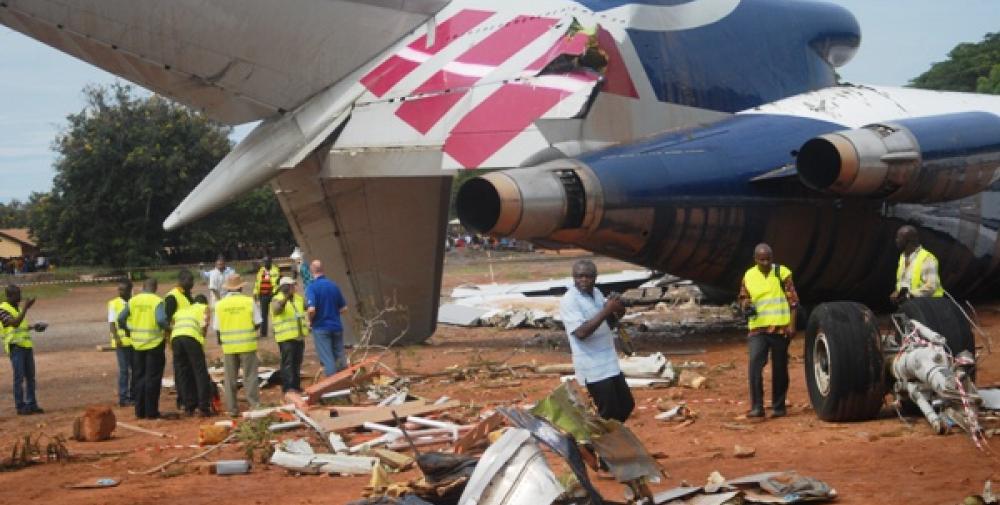
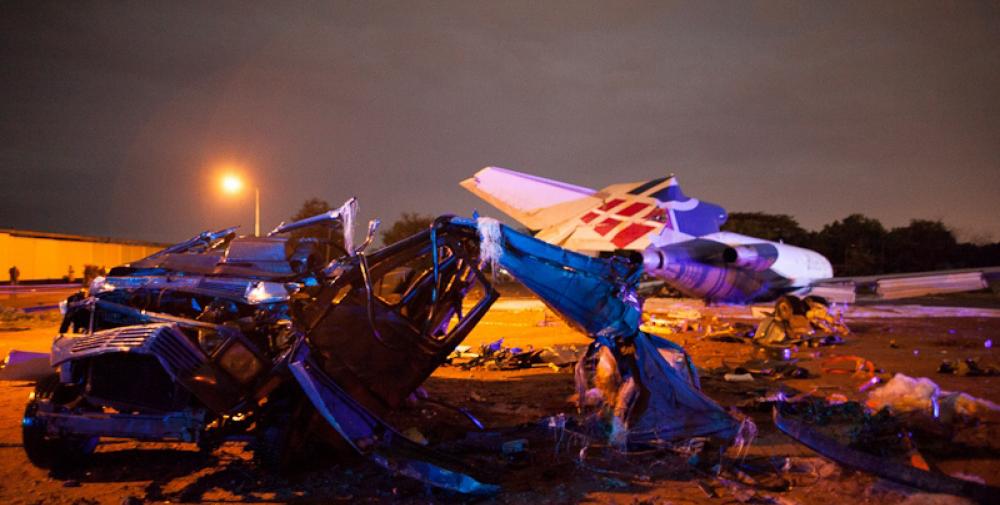
Again, on June 2, 2012, a Nigeria-based Allied Cargo Airline Boeing 727-200 aircraft, with registration number 5NBJN and laden with general goods, overshot the Kotoka International Airport (KIA) runway.
It hit the facility’s perimeter fence and crash-landed near the El Wak Stadium after ramming a Daewoo taxi cab and a Benz 207 passenger bus, killing 10 passengers on board the vehicles instantly.
Two other people on the ground, including a military officer who was riding a motorbike, also perished.
However, the four Nigerian crew members of the cargo plane survived the crash and were treated at the 37 Military Hospital and discharged later.
- 2002 GAF Agusta Bell 412 helicopter crash (5 fatalities)
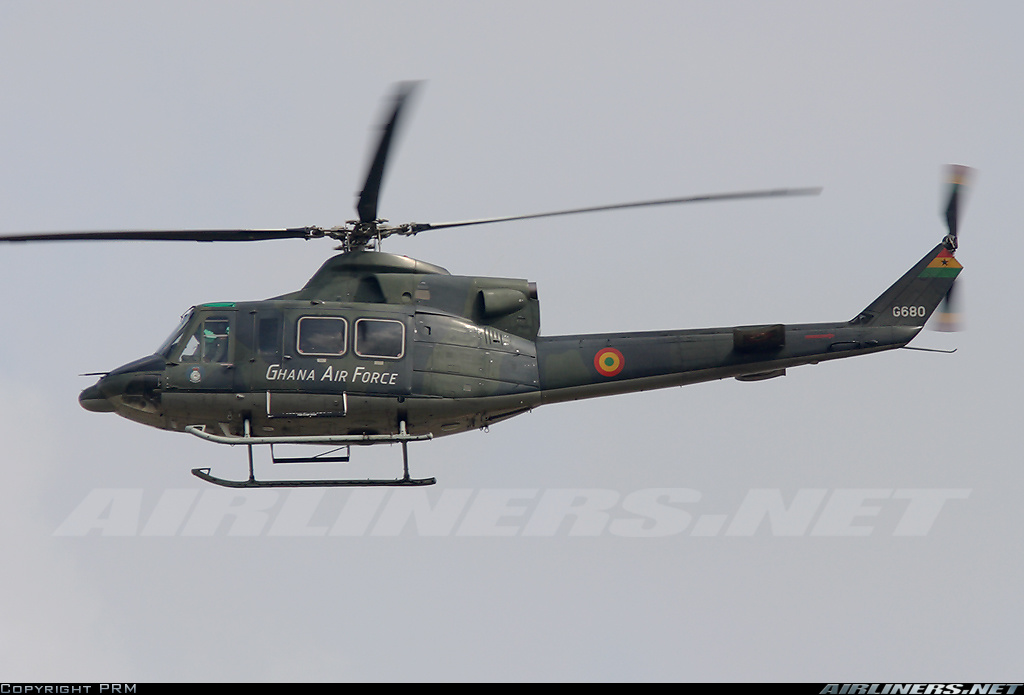
On March 16, 2002, an Agusta Bell 412 helicopter belonging to the Ghana Armed Forces crashed in the Atiwa Forest of the Eastern Region while undertaking a medical evacuation mission.
The accident claimed the lives of five personnel of the Ghana Armed Forces and two civilians.
The helicopter had taken off from the Air Force Base in Burma Camp at about 0700 hours with an estimated flight time of about 50 minutes, but crashed on its return to Accra.
- 2000 Ghana Airlink Flight (7 fatalities)

Another calamity was recorded on Monday, June 5, 2000, when an Airlink plane, a Fokker 27, on an internal flight from Tamale, crash-landed at the threshold of the runway of the Kotoka International Airport.
The crew encountered poor weather conditions with limited visibility due to heavy rainfall. In a nose-down dive, the aircraft landed hard on runway 21. Upon impact, the aircraft broke in two and came to rest.
According to the Bureau of Aircraft Accidents Archives, seven people died and several others were injured. The deceased included an American and a Swiss citizen, while 46 others survived.
The Swiss citizen, Madam Lanz, worked with the Ghana Institute of Literary and Bible Translation (GILBT). The body of Kenneth Rossen, the American passenger on board the Airlink flight 200, was flown back home.
The deceased’s daughter, Megan Rossen, who survived the crash, an official of the 37 Military Hospital, and other family members who flew in, accompanied the body.
A nine-member board of inquiry, headed by Mr. Alex Sam, a retired pilot and former Managing Director of Ghana Airways, was set up to investigate the cause of the incident.
- 1997 Ghana Air Force Jet (1 fatality)
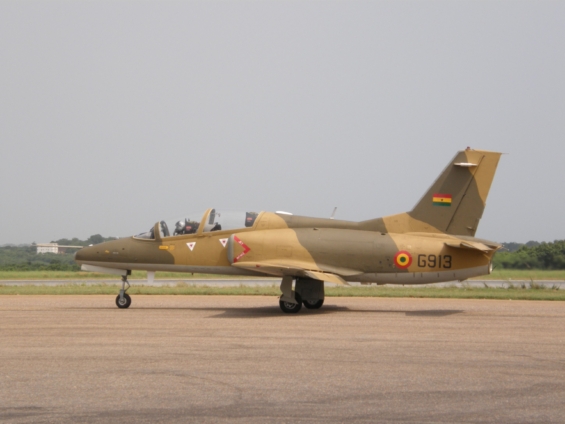
The third May calamity in this series occurred on May 8, 1997.
A Ghana Air Force jet accompanying then-President Jerry John Rawlings’s aircraft crashed near Kotoka International Airport (KIA) after escorting the president’s plane back from Botswana. The crash resulted in the death of the pilot.
According to eyewitnesses, as the presidential plane touched down at KIA, the Air Force jet, which appeared to have come in alongside it, tried unsuccessfully to climb out of an acrobatic dive but apparently lost control and crashed nearby.
The presidential plane then made what was seen as a forced braking to a stop, seemingly to enable Rawlings and others on the plane to dash out to see what help they could offer.
Rawlings later joined a rescue team in a helicopter to locate the body of the late Squadron Leader Samuel Dwamena. Newsmen who joined in an aerial view of the disaster spot reported that the plane had exploded, scattering its parts over a vast area.
According to The Ghanaian Times, some scattered parts were located far away, close to the main tarmac.
- 1978 Aeroplane crash near Takoradi ( 4 fatalities)
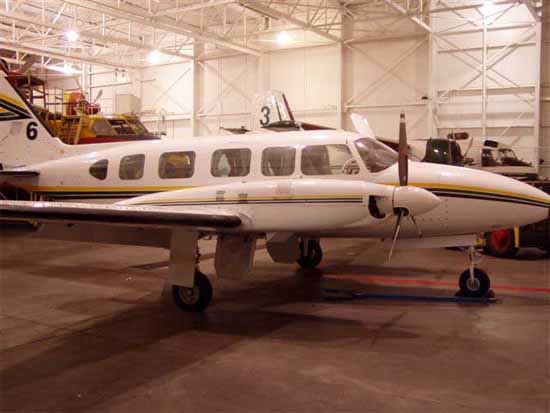
On November 13, 1978, a Piper PA-31-350 Navajo Chieftain, registered as TR-LTQ and operated by Air Inter Gabon, crashed and killed all four occupants.
According to the Bureau of Aircraft Accident Archives, the twin engine airplane departed Port Gentil, Gabon, on a charter flight to the Ivory Coast, carrying three passengers and a pilot. En route, it crashed in unknown circumstances in a wooded area located west of Takoradi, near the border between Ghana and Ivory Coast.
- 1969 Takoradi Airport Crash (1 fatality)
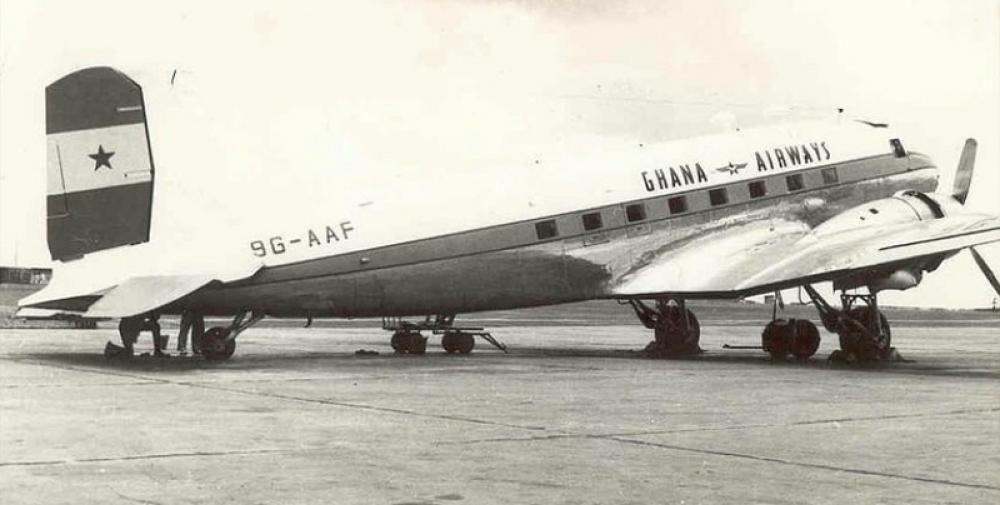
On April 24, 1969, a Douglas C-47 Skytrain (DC-3) with registration 9G-AAF, owned by Ghana Airways, crashed, killing one person and seriously injuring several others.
The pilot-in-command elected to make an emergency landing, and the aeroplane crash-landed a few kilometres short of the runway threshold.
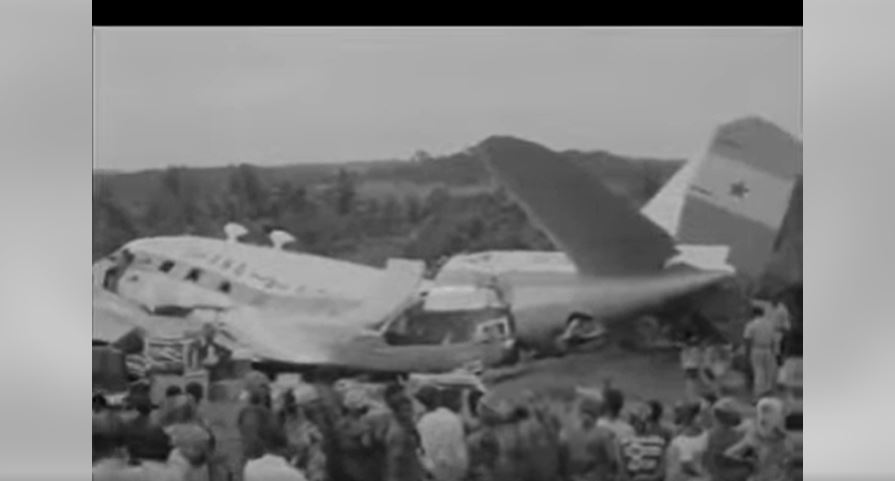
According to the Bureau of Aircraft Accidents Archives, on final approach to Takoradi Airport from Accra, both engines stopped simultaneously.
A passenger was killed, while a few others were wounded, some of them seriously.
The exact cause of the engine failure remains unclear, but the assumption that it was caused by fuel exhaustion or contaminated fuel was not ruled out.
Devastating Road and Rail Disasters
- 1981 Train Derailment (21 fatalities)
January 14, 1981, went down as one of the darkest days in the country’s history when an express train derailed between Accra and Kumasi, killing at least 21 people and injuring about 200.
- 2025 Fuel Tanker Crash near Juaso (16 fatalities)

The Accra–Kumasi highway, often cited as one of Ghana’s most dangerous roads, was the scene of another deadly crash on Monday, July 28, 2025.
The fatal collision involved a Ford Transit Bus with registration number GT 4674-22 and a DAF XF articulated tanker truck with registration number GT 1674-17.
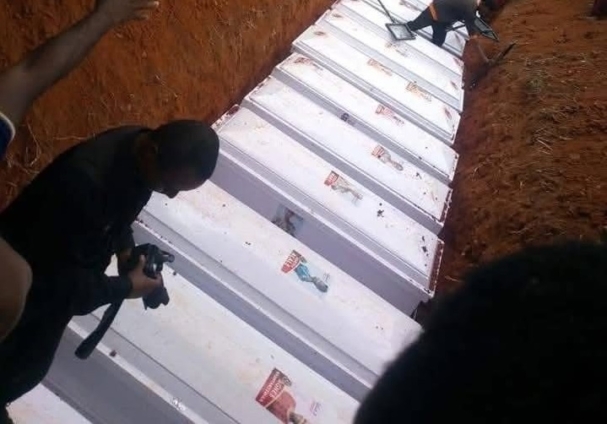
The fuel tanker’s tyre burst, causing it to veer into an oncoming minibus and kill 16 young members of the Saviour Church Youth Ministry who were returning from a church conference in Koforidua.
This incident led to renewed calls from legislators and the National Road Safety Authority (NRSA) for urgent government intervention to improve road safety on the highway.
- 2022 Apiate Explosion (17 fatalities)
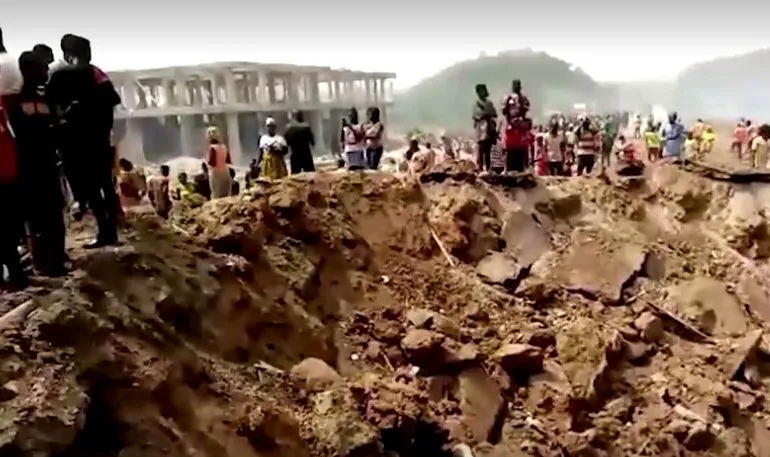
In a catastrophic event that began with a road crash on January 20, 2022, a vehicle carrying mining explosives collided with a motorcycle in the town of Apiate, near Bogoso in the Western Region.
The resulting explosion killed at least 17 people and levelled the entire community.
A total of 3,300 people were affected, and some 59 were injured.
Reports from the National Disaster Management Organisation (NADMO) indicated that 500 buildings were destroyed by the blast, and approximately 1,500 people were left homeless.
- 2020 Kintampo Bus Crash (31 fatalities, with 30 burnt beyond recognition)

This is one of the most severe bus crashes in recent Ghanaian history.
On March 10, 2020, over 30 people lost their lives in a collision between two buses at a spot between Dawadawa No. 2 and Kawampe, about 30 kilometres from Kintampo in the Bono East Region.
It was a result of a head-on collision between a Kia Grandbird bus, carrying 12 passengers along with sacks of green pepper and tomatoes, and a Mercedes Sprinter bus, which was carrying passengers and their luggage.
The Kintampo Municipal Police Commander of the Motor Traffic and Transport Department (MTTD) at the time, Deputy Superintendent of Police (DSP), Mr. Francis Brobbey, told the Daily Graphic that the Grandbird (registered as GT 5059-17), which was traveling from Bawku to Kumasi, veered off its lane at about 4:20 a.m. and collided head-on with the Mercedes Sprinter (registered as AS 1801-18), which was heading towards Tamale from Kumasi.
He said three children and 26 adults were burned beyond recognition.
- 2019 Kintampo-Techiman Highway Crash (60 fatalities)
The Kintampo highway ‘death trap’ was a scene of disaster yet again when a head-on collision of two buses on Friday, March 22, 2019, in Ampoma, a town in the Bono East Region, claimed over 60 lives.
Passengers trapped in one of the buses were consumed by an intense inferno believed to have been sparked by leaking fuel after the impact.
Several others sustained various degrees of injuries.
The accident involved a VVIP Kia bus (GT 3915-17), which was travelling from Garu in the Upper East Region towards Kumasi, and a Grandbird bus, which was also heading towards Bolgatanga.
Road users have been calling on the appropriate authorities to fix the rumble strips on the Kintampo-Techiman road, which have claimed several lives.
Some survivors blamed the accident on the driver, who refused to park and rest, adding that he was sleepy.
- 2019 Ekumfi Crash (30 fatalities)
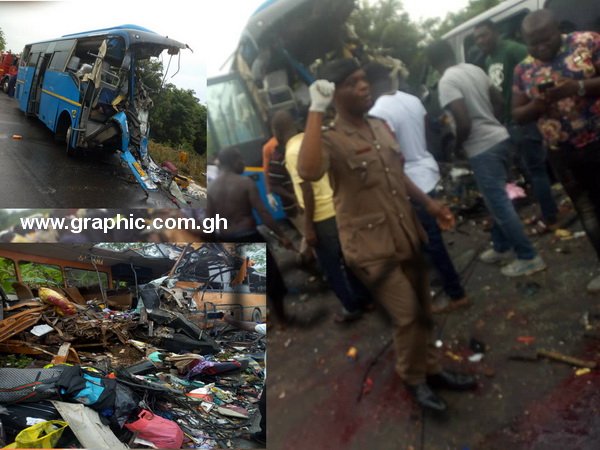
On the same day, later dubbed a ‘Black Friday’, March 22, 2019, more than 30 people died in another fatal accident at Ekumfi Abor on the Winneba-Cape Coast Highway in the Ekumfi District of the Central Region.
The accident involved a Yutong bus travelling from Takoradi to Accra and a Metro Mass Transit bus heading towards Cape Coast, as reported by the Daily Graphic.
According to an eyewitness, the Yutong bus was trying to overtake another vehicle on a wet morning when the accident occurred.
Body parts littered the scene, and blood ran everywhere.
The injured were rushed to the Winneba Trauma Hospital and the Mankessim Catholic Hospital, while the bodies of the deceased were deposited at the morgues of the same hospitals.
Personnel from the Ghana Police Service and the Ghana National Fire Service were at the scene to rescue victims still trapped in the wreck and were also directing traffic, which had built up on the main road as a result of the accident.
- 2016 Kintampo Bus Collision (71 fatalities)
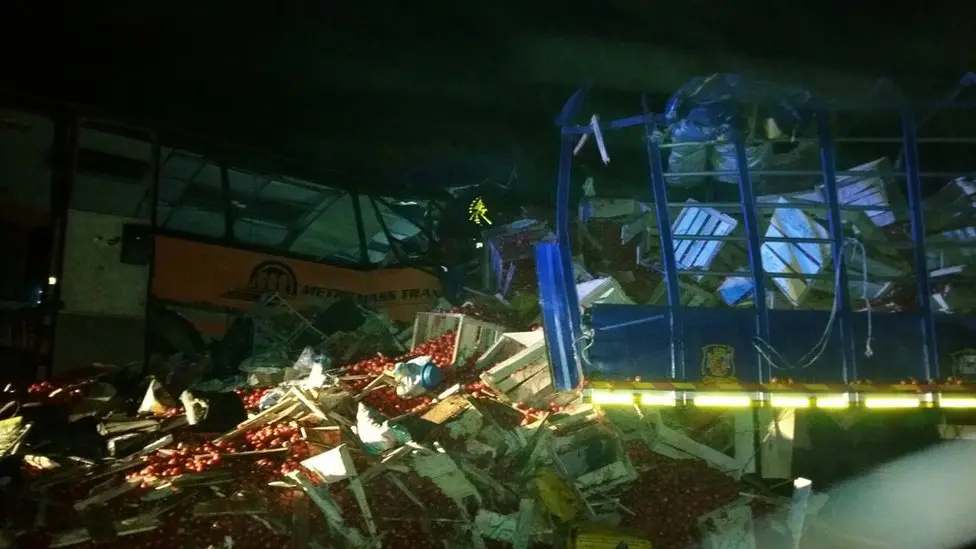
The deadliest of the road accidents in recent history occurred on February 17, 2016, when 71 people perished when a bus crashed into a truck in northern Ghana.
The Metro Mass Transit coach reportedly collided head-on with a cargo truck carrying tomatoes near the town of Kintampo.
Investigators said the bus, which was travelling up north from Kumasi, was overloaded, carrying more than 70 passengers rather than a maximum of 63.
Executive Director at the Bureau of Public Safety (BPS), Dr. Davidson Nana Yaw Akwada, weighed in on the horrific statistics.
“Looking at these numbers, I see the same worrying theme repeating itself: Ghana’s transport systems—whether in the sky, on the rails, or on our roads—exhibit deep and unresolved safety flaws. Each incident has its own backstory, but when you step back, you see a pattern shaped by weak infrastructure, human lapses, and a level of regulatory oversight that simply hasn’t kept pace with the risks.
“A crash in Ghana—whether it’s a helicopter, a train, or a bus—is more than just an isolated tragedy. It’s a stress test of our national safety culture. The real danger isn’t only in the lives we lose on the day, but in the lessons we fail to internalise afterwards. Without stronger oversight, real enforcement, and investment in safer systems, these numbers will not fade; they will grow,” he told MyJoyOnline.
“When a tragedy claims the lives of senior government or military officials, the grief is national—but grief alone is not enough. It should trigger a hard look at the rules we follow, the way we maintain our fleets, and the decisions made before take-off.”
The President and CEO of the Institute for Security, Disaster and Emergency Studies (ISDES) also shared his expert thoughts on the disaster trends.
He emphasised during an interaction with MyJoyOnline, stating: “I think we as a people tend to give everything to God, rather than God having given us the wisdom to prepare ourselves against emergencies of any kind or minimise the ones that we cannot control after our best efforts.”
He continued, “I don’t think we have learned too much, and our hospitals are not ready for traumatic events; our emergency services are not ready for traumatic events. The security forces are not well prepared to deal with overwhelming traumatic events. So, we say we are prepared, but it’s only a ‘sing-song.’ It is not really a serious statement when you go to the nitty-gritty of organisational systems, logistical and equipment preparedness, and personnel preparedness.”
The dire situation has prompted the Ghana Medical Association (GMA) to declare transport-related crashes as a public health emergency that demands urgent national attention.
Speaking at the 44th Annual General Meeting of the Society of Private Medical and Dental Practitioners in Cape Coast, President of the Ghana Medical Association (GMA), Dr. Frank Serebuor, demanded action to address the situation.
“Even our single-lane roads are in such deplorable condition that every trip on them feels like a dance with death,” Dr. Serebuor lamented. “Sadly, to add insult to injury, our drivers ply these terrible roads with careless abandon.”
What is the way forward?
Ghana’s transport safety issue is an accelerating crisis, marked by a disturbing increase in fatalities and a complex array of systemic challenges.
The analysis of major road crashes, such as the 2016 Kintampo bus collision and the 2012 Accra cargo plane-bus crash, alongside recent and recurring tragedies on the Accra-Kumasi Highway, reveals a consistent pattern of contributing factors. These include prevalent driver negligence, critical deficiencies in road infrastructure, issues with vehicle roadworthiness and maintenance, and significant gaps in regulatory enforcement and post-crash emergency response.
Addressing Ghana’s transport safety crisis demands a multi-faceted, sustained, and politically committed approach. This involves not only stricter enforcement of traffic laws and vehicle standards but also significant investment in modernizing road infrastructure, enhancing emergency response capabilities, and fostering a pervasive culture of safety through continuous public education. Without such comprehensive and unwavering commitment, Ghana’s transportation will continue to be a source of national tragedy.
Dr Akwada holds the view that if the country is serious about preventing the next headline tragedy, stakeholders must consider a multi-agency coordination and multi-faceted approach:
• Investigations that dig deep, and findings that see daylight.
• Fully fund and protect the independence of accident investigation bodies for air, rail, and road.
• Publish every investigation in full for civil aviation incidents or redacted for security sector incidents — noting that the lessons aren’t just for the experts; they’re for everyone who travels or operates in the system.
• Infrastructure that meets the moment.
• Modernise rail tracks, crossings, and signals before the next accident forces our hand.
• Redesign dangerous road corridors — Kintampo-Techiman, Accra-Kumasi — with dual carriageways, accelerating lanes, rumble strips, and clear signage.
• Operators who are trained — and retrained.
• Make recurrent training for pilots, drivers, and engineers non-negotiable, with a focus on fatigue, hazard spotting, and real-world scenarios.
• Tie operator license renewals to actual safety records, not just paperwork.
• Rules that are enforced, not ignored.
• Impose real penalties for overloading, speeding, violating duty/rest time limits or skimping on maintenance.
• Carry out mandatory safety audits for transport companies — and ground those that fail.
• Emergency care that buys time
• Build out regional emergency response so the “golden hour” isn’t just a medical ideal but a reality.
• Equip rural hospitals to handle mass-casualty events without delay.
On his part, Dr. Norman emphasizes emergency preparedness to manage unavoidable disasters.
“You need to have a critical mass of people (workers, personnel) who really understand their duty in terms of emergency preparedness. So, if, for example, you are going to appoint somebody to run NADMO, that person should be appointed not simply because they were once involved in some intervention, but because they possess the critical skills to be able to do that job… So, for me, our government, the appointing authorities, must also become more circumspect and appoint the right people.”
He said the laws mandate every institution to design a disaster and emergency risk response plan.
“Every institution in Ghana must have a risk officer and an emergency officer. We don’t train the people who are tasked with this responsibility effectively. If we don’t train people, we will not be able to do one of the most important things that actually reduces risk.”
He cited the Boston Marathon bombing on April 15, 2013, in the US, as an example, where an efficient disaster management system in place ensured minimal fatalities, numbering only three, despite a detonation in a crowded area.
“The hospitals in the Boston area, the ambulance services, the police services, and private hospitals had already gone through a training program, where they had planned for the worst-case scenario. So, out of the 200 people, some suffered limb loss, and only three people died. Something like that, with a bomb explosion, something like that in Ghana, all 200 people would have faced a complete disaster in trauma care. Transportation of the injured people would have been a disaster.”
Compared to the Adansi crash incident, Dr. Norman wondered why the Ghana Armed Forces (GAF) could not parachute personnel to the nearest village and make a rapid deployment to the crash site “to cordon off the area to prevent the villagers” from contaminating the area.
With the area open to the public, some villages had access to the bodies and the crash site, with the bodies later transported in cocoa sacks.
He further urged regular simulation exercises to better handle emergencies.
“We don’t do simulation exercises, and yet, if you ask any of the security agencies today, they will tell you they are prepared. Prepared for what? It is only when the emergency happens that you see that they are as unprepared as we are when it comes to emergency preparedness,” he concluded.
DISCLAIMER: The Views, Comments, Opinions, Contributions and Statements made by Readers and Contributors on this platform do not necessarily represent the views or policy of Multimedia Group Limited.
DISCLAIMER: The Views, Comments, Opinions, Contributions and Statements made by Readers and Contributors on this platform do not necessarily represent the views or policy of Multimedia Group Limited.

